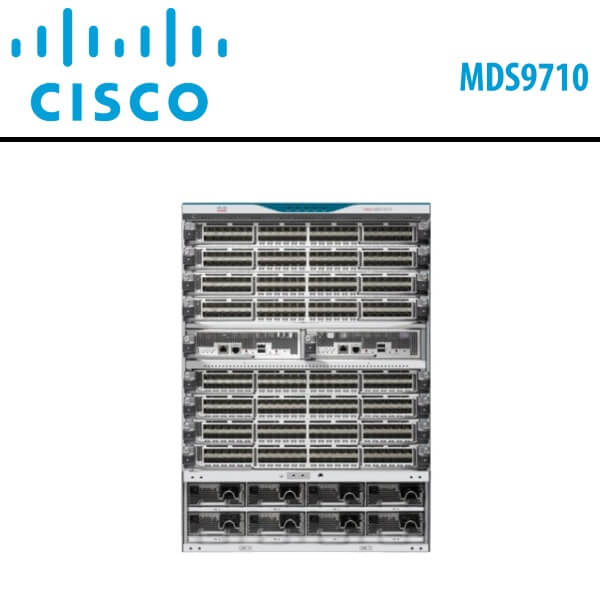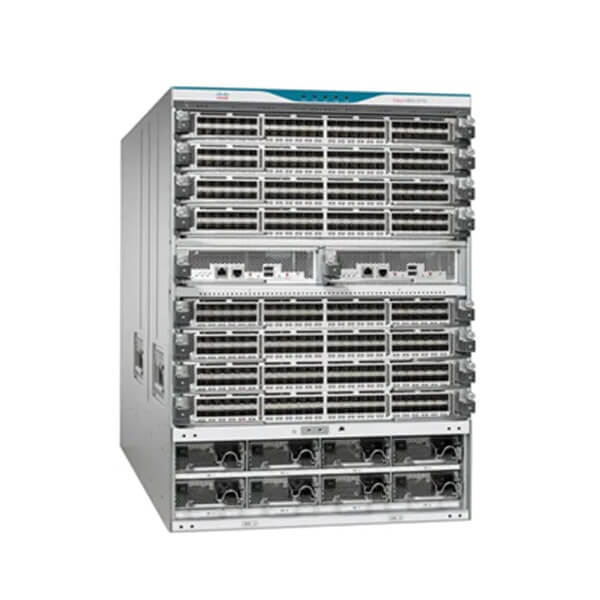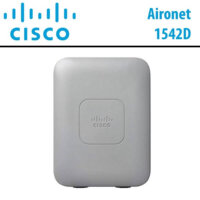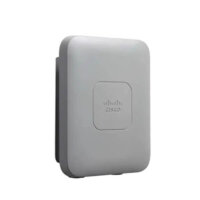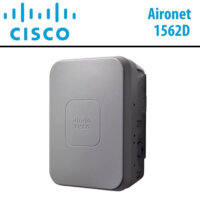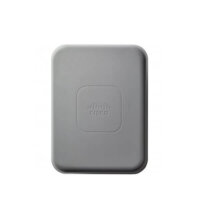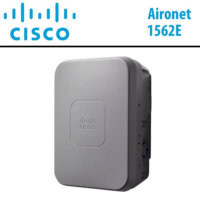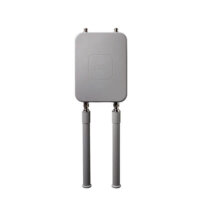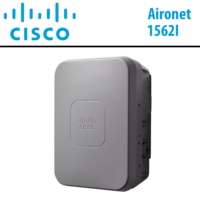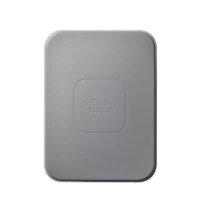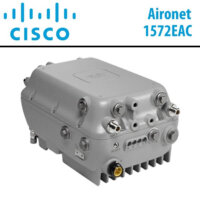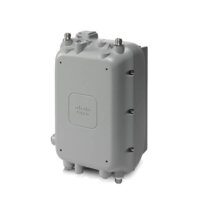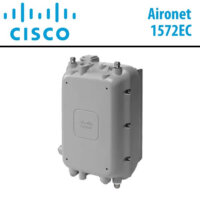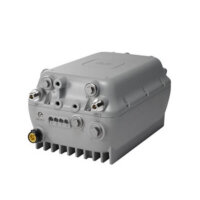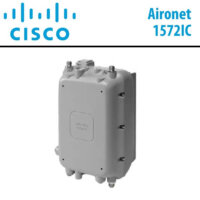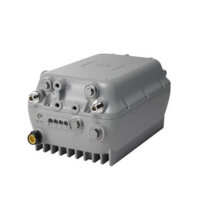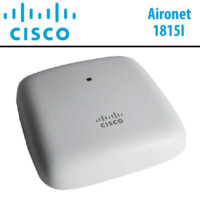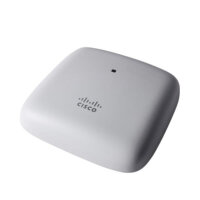Description
Cisco MDS9710 Dubai
The Cisco MDS9710 Dubai, seamlessly incorporates Fiber Channel, IBM Fiber Connectivity (FICON), Fiber Channel over IP (FCIP), and Fiber Channel over Ethernet (FCoE) within a unified fabric. This switch facilitates the deployment of enterprise clouds and the transformation of large storage networks, leading to reduced operating costs. Specifically designed to meet the exacting demands of expansive virtualized storage environments, the Cisco MDS9710 Dubai operates as a director-class SAN switch, sharing the same operating system and management interface as other Cisco data center switches.
By integrating intelligent capabilities onto a high-performance, protocol-independent switch fabric, the Cisco MDS9710 Dubai ensures uncompromising availability, security, and scalability. It simplifies management processes and provides the flexibility to seamlessly integrate new technologies into the existing infrastructure.
Features
High Performance
The combination of the 16-Gbps, 32-Gbps Fiber Channel switching module and Cisco MDS9710 Dubai Crossbar Switching Fabric-3 Module enables up to 3.5 Terabits per second (Tbps) of front-panel Fiber Channel throughput between modules in each direction for each of the eight Cisco MDS9710 Dubai payload slots. Based on central arbitration and a crossbar fabric, the MDS 9710 architecture provides line-rate, nonblocking, predictable performance for all traffic conditions for every port up to the future 64-Gbps speed in the chassis.
High availability
Get best-in-class availability. The Cisco MDS9710 Dubai is the first director-class switch in which all major components, even the fabric card, are redundant. Obtain grid redundancy with the power supply and 1+1 redundant supervisor and add another fabric card to enable N+1 fabric redundancy (32-Gbps). The MDS 9710 combines non-disruptive software upgrades, stateful process restart and failover, and full redundancy of all major components for best-in-class availability.
Fully integrated SAN analytics
This Cisco MDS9710 Dubai switch also offers state-of-the-art SAN analytics and telemetry capabilities that have been built into this next-generation hardware platform. This new state-of-the-art technology couples the next-generation port ASIC with a fully dedicated network processor (NPU) designed to complete analytics calculations in real time on the 32-Gbps line card. This new capability is extended due to the hardware capabilities of the 48-port 32-Gbps line card (DS-X9648-1536K9). The telemetry data extracted from the inspection of the frame headers are calculated on board (within the switch) and, using an industry-leading open format, can be streamed to any analytics-visualization platform.
Industry-leading scalability
Power the largest storage environments with up to 24 Tbps of Fiber Channel bandwidth. A single chassis delivers 384 2/4/8-Gbps, 4/8/16-Gbps, 8/16/32-Gbps full line-rate, or 10-Gbps full line-rate autosensing Fiber Channel over Ethernet ports, and a single rack supports up to 1152 Fiber Channel ports.
Future readiness
With the long-lasting chassis, customers have the flexibility of doing in-place, online upgrades to the new fabric module, Cisco MDS9710 Dubai Crossbar Switching Fabric-3 Module. With the new fabric switching modules, the switch can be upgraded to support 64-Gbps line-rate ports. MDS 9710 Crossbar Switching Fabric-3 Module supports double the bandwidth of Fabric-1 and thus only half the number is needed to support currently shipping 32-Gbps line cards.
Intelligent network services
Migrate your SAN islands to enterprise-wide storage networks with VSAN technology, Access Control Lists (ACLs) for hardware-based intelligent frame processing, and fabric-wide Quality of Service (QoS).
- Integrated hardware-based VSANs and Inter-VSAN Routing (IVR) : Integration of VSANs into port-level hardware allows any port in a system or fabric to be partitioned to any VSAN. Deliver line-rate routing between any ports in a system or fabric without the need for external routing appliances.
- Intelligent storage services : Interoperability with intelligent service capabilities on other Cisco MDS 9000 Family platforms and the intelligent services switch provide services such as acceleration of storage applications for data replication, backup, and data migration to hosts and targets.
- Smart Zoning : Efficiently provision hardware access control entries specified by the zone set. Match smart zones to applications, application clusters, hypervisor clusters, or other data center entities. Avoid superfluous entries that allow servers (initiators) to talk to other servers or storage devices (targets) to talk to other storage devices. You’ll gain larger zones with multiple initiators and targets without consuming excessive hardware resources. Automate zoning tasks and avoid creating many small zones.
Virtual machine transparency
Deterministic hardware performance and a comprehensive feature set allow virtual machines to have the same SAN attributes as a physical server. On a per-virtual machine basis, the Cisco NX-OS Software offers VSANs, QoS policies, access control, performance monitoring, and data protection to promote the scalability and mobility of virtual machines. Cisco Data Center Network Manager (DCNM) provides end-to-end visibility all the way from the virtual machine down to the storage resource, with resource allocation, performance measurements, and predictions available on a per-virtual machine basis to enable rapid troubleshooting in mission-critical virtualized environments.
Comprehensive security
In addition to support for services such as VSANs, hardware-enforced zoning, ACLs, per-VSAN Role-Based Access Control (RBAC), and Cisco TrustSec® Fiber Channel link encryption, Cisco MDS9710 Dubai Multilayer Directors support a comprehensive security framework consisting of RADIUS and TACACS+, Fiber Channel Security Protocol (FC-SP), Secure File Transfer Protocol (SFTP), Secure Shell (SSH) Protocol, and Simple Network Management Protocol Version 3 (SNMPv3). Cisco TrustSec Fiber Channel link-encryption delivers transparent, hardware-based 16-Gbps or 32-Gbps line-rate encryption of Fiber Channel data in addition to 10-Gbps line-rate encryption.
Unified SAN management
The Cisco MDS9710 Dubai includes built-in storage network management with all features available through a Command-Line Interface (CLI) or Cisco Data Center Network Manager (DCNM), a centralized management tool that simplifies management of unified fabrics. DCNM supports integration with third-party storage management applications to allow transparent interaction with existing management tools. DCNM supports federation of up to 10 DCNM servers to manage up to 150,000 devices using a single management pane.
Sophisticated diagnostics
Intelligent diagnostics, protocol decoding, network analysis tools, and the Cisco Call Home capability give you reliability, faster problem resolution, and reduced service costs. Starting with Cisco MDS 9000 NX-OS Release 6.2, the Cisco Generic Online Diagnostics (GOLD) framework replaces the Cisco Online Health Management System (OHMS) diagnostic framework on the new MDS 9700 Series chassis. GOLD is a suite of diagnostic tools that you can use to verify that hardware and internal data paths are operating properly. It offers boot-time diagnostics, continuous monitoring, standby fabric loopback tests, and on-demand and scheduled tests. Enable the rapid fault isolation and system monitoring that are critical in today’s continuously operating environments.
Multiprotocol architecture
A multilayer architecture enables a consistent feature set over a protocol-independent switch fabric. The Cisco MDS9710 Dubai transparently integrates Fiber Channel, FCoE, and FICON.
- 2/4/8-Gbps, 4/8/16-Gbps, 8/16/32-Gbps, 10-Gbps Fiber Channel, and 10 Gigabit Ethernet : The MDS 9710 supports 2/4/8/16-Gbps and 10-Gbps ports on the Cisco MDS 9700 48-Port 16-Gbps Fiber Channel Switching Module for both open-systems and FICON environments. The MDS 9710 also supports 10 Gigabit Ethernet clocked optics carrying Fiber Channel traffic. The MDS 9710 supports 4/8/16/32-Gbps on the Cisco MDS 9700 48-Port 32-Gbps Fiber Channel Switching Module.
- FICON : The MDS 9710 is mainframe ready and supports for IBM System z FICON and Linux environments.
- Multihop FCoE : Extend connectivity from FCoE and Fiber Channel fabrics to FCoE and Fiber Channel storage devices.
- SAN Extension FCIP support : The Cisco MDS 9000 24/10-Port SAN Extension Module is supported on MDS 9700 Series Multilayer Directors. With 24 line-rate 2/4/8/10/16-Gbps Fiber Channel ports and eight 1- and 10-Gigabit Ethernet FCIP ports, this module enables deployment of large and scalable SAN extension solutions.
Specifications
| Feature | Description | ||
| Product compatibility | Cisco MDS 9000 Family | ||
| Software compatibility | Cisco MDS NX-OS Software Release 6.2.1 or later
Cisco MDS NX-OS Software Release 8.4.1 or later for Supervisor-4/Fabric-3 support |
||
| Indicators | Power supply LED
FAN LED Supervisor LED Fabric LED Line-card module LED |
||
| Protocols | Fiber Channel standards
FC-PH, Revision 4.3 (ANSI INCITS 230-1994) FC-PH, Amendment 1 (ANSI INCITS 230-1994/AM1-1996) FC-PH, Amendment 2 (ANSI INCITS 230-1994/AM2-1999) FC-PH-2, Revision 7.4 (ANSI INCITS 297-1997) FC-PH-3, Revision 9.4 (ANSI INCITS 303-1998) FC-PI, Revision 13 (ANSI INCITS 352-2002) FC-PI-2, Revision 10 (ANSI INCITS 404-2006) FC-PI-3, Revision 4 (ANSI INCITS 460-2011) FC-PI-4, Revision 8 (ANSI INCITS 450-2008) FC-PI-5, Revision 6 (ANSI INCITS 479-2011) FC-FS, Revision 1.9 (ANSI INCITS 373-2003) FC-FS-2, Revision 1.01 (ANSI INCITS 424-2007) FC-FS-2, Amendment 1 (ANSI INCITS 424-2007/AM1-2007) FC-FS-3, Revision 1.11 (ANSI INCITS 470-2011) FC-LS, Revision 1.62 (ANSI INCITS 433-2007) FC-LS-2, Revision 2.21 (ANSI INCITS 477-2011) FC-SW-2, Revision 5.3 (ANSI INCITS 355-2001) FC-SW-3, Revision 6.6 (ANSI INCITS 384-2004) FC-SW-4, Revision 7.5 (ANSI INCITS 418-2006) FC-SW-5, Revision 8.5 (ANSI INCITS 461-2010) FC-GS-3, Revision 7.01 (ANSI INCITS 348-2001) FC-GS-4, Revision 7.91 (ANSI INCITS 387-2004) FCP, Revision 12 (ANSI INCITS 269-1996) FCP-2, Revision 8 (ANSI INCITS 350-2003) FCP-3, Revision 4 (ANSI INCITS 416-2006) FCP-4, Revision 2b (ANSI INCITS 481-2011) FC-SB-2, Revision 2.1 (ANSI INCITS 349-2001) FC-SB-3, Revision 1.6 (ANSI INCITS 374-2003) FC-SB-3, Amendment 1 (ANSI INCITS 374-2003/AM1-2007) FC-SB-4, Revision 3.0 (ANSI INCITS 466-2011) FC-SB-5, Revision 2.00 (ANSI INCITS 485-2014) FC-BB-6, Revision 2.00 (ANSI INCITS 509-2014) FC-BB-2, Revision 6.0 (ANSI INCITS 372-2003) FC-BB-3, Revision 6.8 (ANSI INCITS 414-2006) FC-BB-4, Revision 2.7 (ANSI INCITS 419-2008) FC-BB-5, Revision 2.0 (ANSI INCITS 462-2010) FC-VI, Revision 1.84 (ANSI INCITS 357-2002) FC-SP, Revision 1.8 (ANSI INCITS 426-2007) FC-SP-2, Revision 2.71 (ANSI INCITS 496-2012) FAIS, Revision 1.03 (ANSI INCITS 432-2007) FAIS-2, Revision 2.23 (ANSI INCITS 449-2008) FC-IFR, Revision 1.06 (ANSI INCITS 475-2011) FC-FLA, Revision 2.7 (INCITS TR-20-1998) FC-PLDA, Revision 2.1 (INCITS TR-19-1998) FC-Tape, Revision 1.17 (INCITS TR-24-1999) FC-MI, Revision 1.92 (INCITS TR-30-2002) FC-MI-2, Revision 2.6 (INCITS TR-39-2005) FC-MI-3, Revision 1.03 (INCITS TR-48-2012) FC-DA, Revision 3.1 (INCITS TR-36-2004) FC-DA-2, Revision 1.06 (INCITS TR-49-2012) FC-MSQS, Revision 3.2 (INCITS TR-46-2011) Fiber Channel classes of service : Class 2, Class 3, and Class F Fiber Channel standard port types : E, F, FL, and B Fiber Channel enhanced port types : SD, ST, and TE FCoE standard port types : VE and VF IEEE 802.1Qbb-2011 : Priority-based Flow Control (PFC) IEEE 802.3db-2011 : MAC address control frame for priority-based flow control IEEE 802.1Qaz-2011 : Enhanced transmission selection for bandwidth sharing between traffic classes (ETS and DCBX) IP over Fiber Channel (RFC 2625) IPv6, IPv4, and Address Resolution Protocol (ARP) over Fiber Channel (RFC 4338) Extensive IETF-standards-based TCP/IP, SNMPv3, and Remote Monitoring (RMON) MIBs RFC 3643 and 3821 FCIP |
||
| Chassis slot configuration | Line-card slots : 8
Supervisor slots : 2 Crossbar switching fabric slots : 6 (3 fabric modules for 16-Gbps line rate and 6 fabric modules for 32-Gbps line rate) Fan trays : 3 fan trays at the back of the chassis Power supply bays : 8 |
||
| Switching capability per fabric | Number of Fabric-3 cards | Front-panel Fiber Channel bandwidth per slot | FCoE bandwidth per slot |
| 1 | 512 Gbps | 440 Gbps | |
| 2 | 1024 Gbps | 880 Gbps | |
| 3 | 1536 Gbps | 1320 Gbps | |
| 4 | 2048 Gbps | 1760 Gbps | |
| 5 | 2560 Gbps | 2200 Gbps | |
| 6 | 3072 Gbps | 2640 Gbps | |
| Performance and scalability | Up to 24-Tbps front-panel Fiber Channel switching bandwidth and 21Tbps of FCoE bandwidth
Supported Fiber Channel port speeds 2/4/8-Gbps autosensing; optionally configurable (2G not supported on 32-Gbps module) 4/8/16-Gbps autosensing; optionally configurable 8/16/32-Gbps autosensing; optionally configurable 10-Gbps Fiber Channel Buffer credits : 48-port line-rate 16-Gbps advanced Fiber Channel modules : Up to 500 per port (dedicated-mode ports) standard Up to 4095 on an individual port (dedicated-mode ports with optional Cisco MDS 9700 Enterprise Package license activated) Buffer credits : 48-port line-rate 32-Gbps Fiber Channel modules : Up to 500 per port (dedicated-mode ports) standard Up to 8191 on an individual port (dedicated-mode ports with optional Cisco MDS 9700 Enterprise Package license activated) Ports per chassis Up to 384 2/4/8-Gbps, 4/8/16-Gbps, 8/16/32-Gbps, or 10-Gbps Fiber Channel ports Ports per rack Up to 1152 2/4/8-Gbps, 4/8/16-Gbps, 8/16/32-Gbps, or 10-Gbps Fiber Channel ports Port channel : Up to 16 ports (The channel can span any speed-matched port on any module in the chassis.) |
||
| Features and functions | |||
| Fabric services | Name server
Registered State Change Notification (RSCN) Login services Fabric Configuration Server (FCS) Broadcast In-order delivery |
||
| Advanced functions | VSAN
IVR Port channel with multipath load balancing QoS-flow-based, zone-based N-port ID Virtualization (NPIV) |
||
| Diagnostics and troubleshooting tools | POST diagnostics
Online diagnostics Internal port loopbacks SPAN and RSPAN Fiber Channel traceroute Fiber Channel ping Fiber Channel debug Cisco Fabric Analyzer Syslog Online system health Port-level statistics Real-Time Protocol (RTP) debug |
||
| Network security | VSANs
ACLs Per-VSAN RBAC Fiber Channel zoning N-Port Worldwide Name (WWN) N-port FC-ID Fx-port WWN Fx-port WWN and interface index Fx-port domain ID and interface index Fx-port domain ID and port number FC-SP DH-CHAP switch-to-switch authentication DH-CHAP host-to-switch authentication Port security and fabric binding Management access SSHv2 implementing Advanced Encryption Standard (AES) SNMPv3 implementing AES SFTP Cisco TrustSec Fiber Channel link encryption |
||
| FICON | FC-SB-3 compliant
Cascaded FICON fabrics Intermix of FICON and Fiber Channel FCP traffic FICON CUP management interface Exchange-based routing ready |
||
| Serviceability | Configuration file management
Non-disruptive software upgrades for Fiber Channel interfaces Cisco Call Home feature Power-management LEDs Port beaconing System LEDs SNMP traps for alerts Network boot |
||
| Reliability and availability | Online, non-disruptive software upgrades
Stateful non-disruptive supervisor module failover Hot-swappable redundant supervisor modules Hot-swappable redundant fabric modules * Hot-swappable 2N redundant power Hot-swappable fan trays with integrated temperature and power management Hot-swappable Enhanced Small Form-Factor Pluggable (SFP+) optics (2/4/8/10/16/32-Gbps Fiber Channel and 10 Gigabit Ethernet). 2G speeds not supported on 32G switching module. Hot-swappable switching modules Stateful process restart Any module, any port configuration for port channels Fabric-based multipathing Per-VSAN fabric services Online diagnostics Port tracking Virtual Routing Redundancy Protocol (VRRP) for management |
||
